From Japan to the World: How Japan First Embraced and Then Elevated Denim
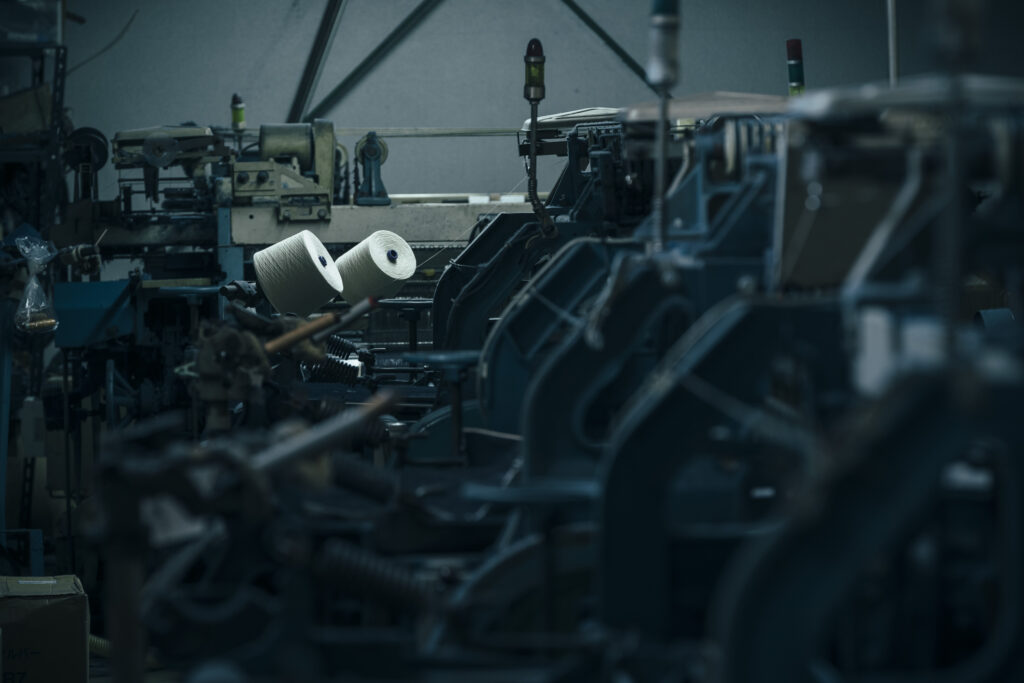
The world of denim is a colourful one, embracing dozens of industries and countless cultural niches and subcultures. The World of Blue is an inclusive and multicultural place, offering a warm welcome to enthusiasts of all stripes, regardless of where they come from or how they live.
The denim industry is no different, It is made up of a broadly diverse tapestry of passionate and motivated professions—all of them drawn (like so many of us) towards that intoxicating mixture of cotton and indigo.
Our favorite blue fabric was probably born in France, but it found its deepest calling in the American West, where riveted waist overalls, perfected by Strauss and Davis, were an utterly necessary invention. Stylish and durable jeans would, over the next century, become one of America’s defining products, and they would spread to all corners of the world. Denim is now manufactured everywhere, with the manufacturers on different continents putting their own spin on things. Technically, they all make the same fabric, but small difference (everything from the temperature of the factory, the hardness of the local water, or the skill of the local workforce) mean that denim produced in Indonesia might look and feel very different from denim produced in England.
If one country understands details, it’s Japan. Firmly woven into the Japanese culture is an overwhelming desire to constantly improve. The Japanese take nothing for granted, and they never rest on their laurels. This ambition and motivation is clearly visible in the Japanese electronics industry, the Japanese food industry, and—surprise, surprise—the Japanese denim industry!
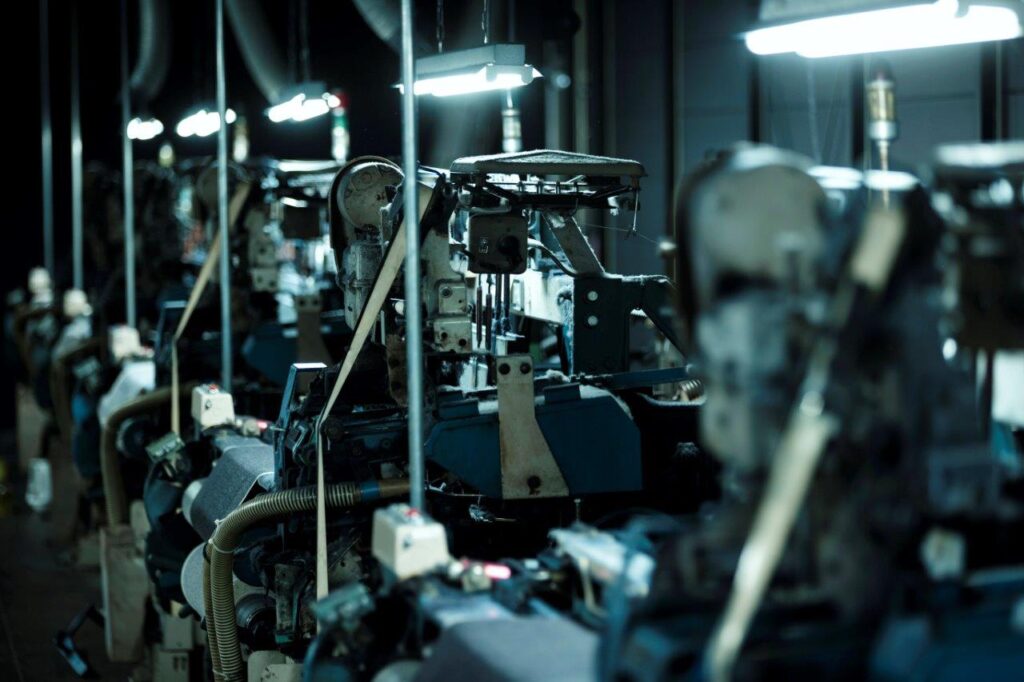
The Journey of Denim to Japan: From Obsession to Trial and Error
In the 1950s, vintage American clothing started to become popular in Japan. American soldiers occupied Japan in the aftermath of the Second World War, and the Gis were informal ambassadors, introducing American culture and style to Japan. Soldiers began selling their well-worn jeans in markets surrounding some of the large ports where they were based.
Demand for America’s discarded jeans outpaced the supply, and there was soon a bustling trade in used pairs of Levi’s in urban areas. The more popular jeans became, the more difficult it became for Japanese customers to get their hands on pairs. According to W. David Marx, during occupation, Japanese buyers would purchase the pairs from soldiers for 300-500 Yen and then charge Japanese customers ten times what they paid for them. New jeans were virtually unheard of in Japan. Only the wealthy and well-travelled elite had access to such a luxury.
By the end of the ‘50s, thanks to an easing of government regulations, importers were able to start bringing new pairs of American jeans into Japan. The crisp and dark blue denim wasn’t as appealing to Japanese consumers as the jeans pre-faded by American soldiers, but the tide was starting to turn. In Kojima, a manufacturing town with a long history of producing working clothing and school uniforms, an idea was starting to take shape.
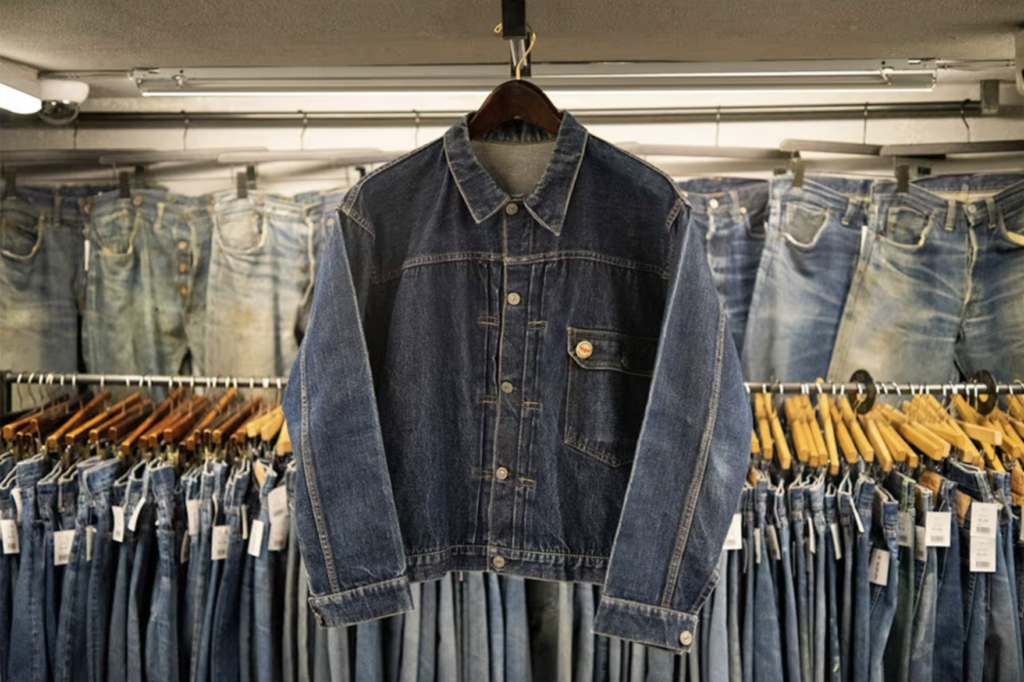
The Road to the First pair of Japanese Denim
Based on a deep-rooted fascination with American denim, a group of denim visionaries started to explore an entirely new avenue in Kojima. They were laying the foundations for Japan’s denim industry, and the location was no accident. The city of Kojima has been the center of Japan’s cotton industry since the 1930’s, and it had considerable manufacturing muscle to flex.
After years of trial and error, Maruo Clothing produced the first-ever pair of Japanese selvedge jeans. The jeans were made in Japan, but the denim, the hardware, and even the thread were American. The first pairs were made from 14.5 oz. Canton Mills denim, Talon zippers, and Scovill rivets. Even the sewing machines had to be imported from America.
The jeans, which Maruo branded as Canton, were not a roaring success, but they sold enough pairs to keep their spirits up. They followed this up just a few years later with the first pair of truly made-in-Japan jeans, thanks to a partnership between Maruo and Japanese mill Kurabo. They debuted their Big John M-Series jeans in 1973, the first jeans made in Japan from selvedge denim milled in Japan.
The launch of this series was a huge milestone for the entire denim industry in Japan, and some mark this date as the beginning of the Japanese selvedge denim revolution. More and more brands and mills were founded in Japan, and the Japanese denim industry (still largely clustered in Kojima) started to flourish. The industry’s focus transitioned from attempting to replicate American-made denim to striving for improvements in every aspect of denim production.
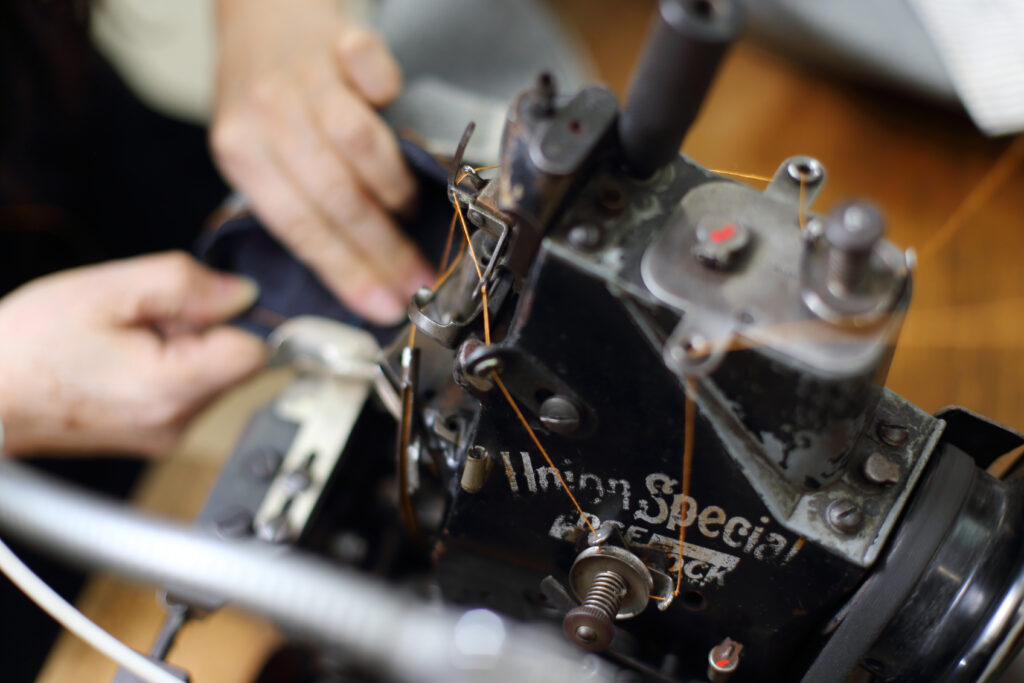
At the same time, across the Pacific, America was moving in a different direction. Denim’s popularity meant American manufacturers were looking for ways to produce denim as quickly and inexpensively as possible. The rickety old shuttle looms were replaced with quicker and more efficient looms. The shuttle looms were either placed in storage or sold off piecemeal wherever there were buyers.
Some of these looms found a new home in Japan, where Japanese denim masters were starting to practice their skills, fusing age-old Japanese textile traditions with American machinery. A vigorous denim supply chain took shape, and the Japanese denim industry quickly found a way through its growing pains.
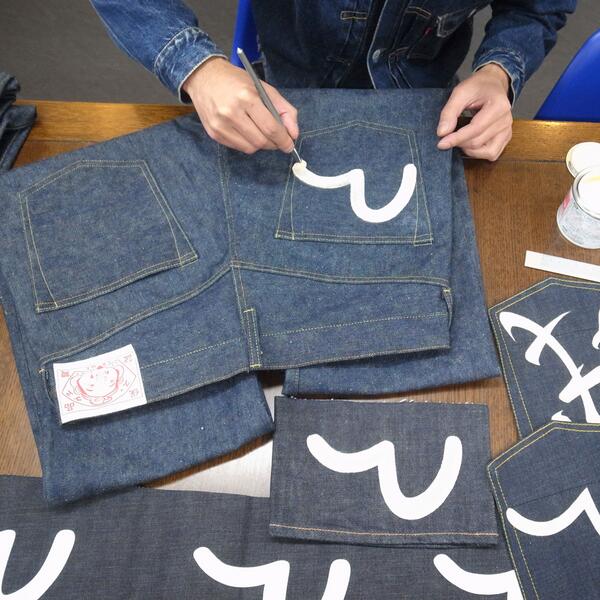
In 1979, the brand Studio D’Artisan was founded in Osaka, becoming the first of a long line of iconic denim brands based in Osaka. They would soon be joined by Denime, Evisu, Fullcount, and Warehouse, collectively known as the Osaka 5. These brands together created a distinctive style and established the foundation of the culture and ethos of Japanese denim. Within a few decades, the Japanese denim industry had become the epicenter of the quality denim trade. Brands like Momotaro, Iron Heart, Samurai, and The Flat Head radically revolutionized the industry, changing the global denim landscape permanently.
The Allure of Japanese Denim
The commitment of Japanese denim mills to the original and authentic way of crafting denim results in primarily unwashed, raw jeans that showcase their makers’ meticulous attention to detail. Using antique Toyoda shuttle loom, very similar in design to the ones used by Cone Mills, which made all of Levi’s denim in the brand’s heyday, Japanese artisans found ways to give their denim an entirely unique irregular and textured structure—something that modern looms cannot replicate. These irregularities give the fabric a distinctive ‘character,’ a hallmark of Japanese denim that is cherished by the denim community. Japanese denim stands out with its diverse textures. It features a rougher and hairier feel compared to denims produced elsewhere. This unique quality is a result of different finishing processes applied to the fabric after weaving.
Japan has also set itself apart from other countries by focusing on developing heavyweight fabrics. While most countries top out their denim production around 16 oz. per square yard, Japanese manufacturers regularly produce denims that tip the scales at as much 32 oz. per square yard—jeans made from this denim can stand on their own.
While manufacturing techniques may vary among Japanese brands and mills, they have collectively elevated denim to a new standard of excellence. In just a few decades, Japanese denim has earned a global reputation for its unparalleled quality, durability, weight, and craftsmanship, with instantly recognizable texture and colour. Japanese denim is widely regarded as among the finest in the world, and numerous Japanese brands have a global fan base. The fact that most Japanese brands and manufacturers, didn’t had any English communication in their early days helped add to the aura of mystery surrounding the product, which only drew more people to it.
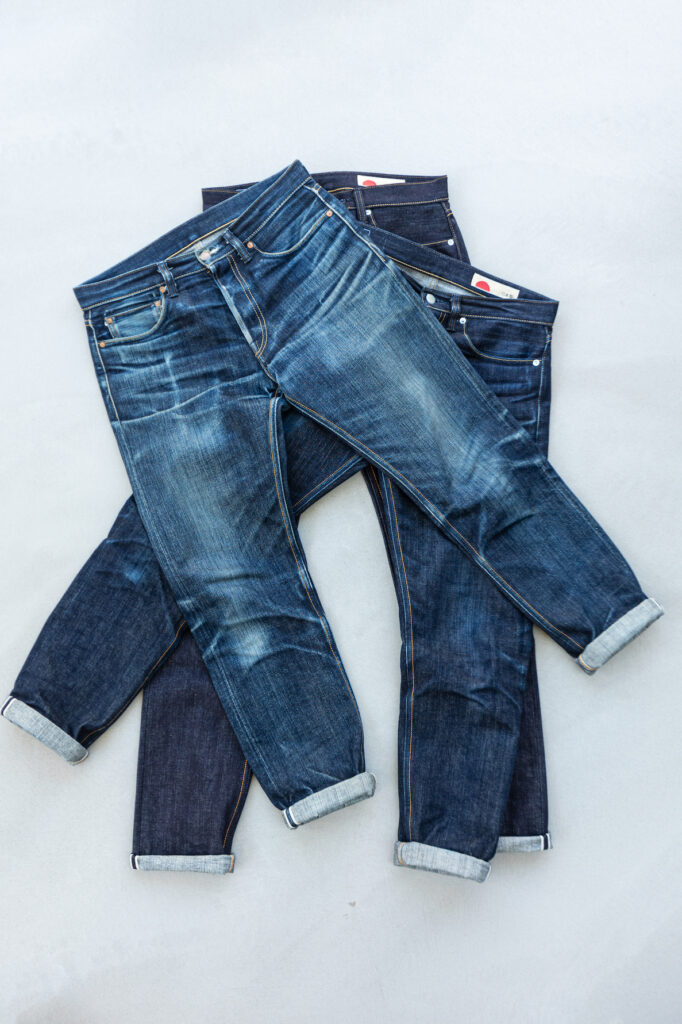
The Present Landscape of Japan’s Denim Industry
Today, Japanese raw denim is still widely regarded as the best that the global denim industry can produce. It is considered to be of an unmatched quality, it has a unique structure, and it comes with unmatched fading potential. While Japanese denim may be expensive compared to jeans of similar quality from other countries, enthusiasts firmly believe it is worth the cost.
Despite its enduring popularity, Japanese denim has been facing challenges in the past few years. Like so many other countries, Japan is under pressure due to the aftermath of Covid, inflation, and relatively high production costs including labor and materials. There is also the aging workforce, and the Japanese government has not been open-handed working permits since the Covid pandemic. The concerns about a shortage of skilled artisans in the future are already having a big impact on the productivity of most denim mills, mainly affecting the smaller brands. Last but not least, while much of the rest of the world is focused on sustainable manufacturing, Japanese manufacturers have only recently begun looking in this direction. Although raw denim is a lot more sustainable than mass-market denim (it requires far less washing), the Japanese denim industry still has much to do when it comes to addressing environmental concerns.
While the Japanese denim industry faces the challenges above, its enduring popularity is expected to guide it through the crisis. Conversations with various Japanese brands reveal that those without their own factories are experiencing postponed orders and escalating prices, because the factories are prioritizing their own brands. On the flip side, European brands making products in Japan are facing larger minimum order quantities (MOQs) and higher prices. Many of these brands understand that Japanese denim has an unmatched cachet, so they have chosen not to move production to other countries. Instead, they are accepting smaller profit margins. They are expecting prices to decrease as the industry stabilizes after this tumultuous period.
Manufacturers, brands and end-consumers choose to stick with denim from Japan, even though denim from other countries could be a great alternative. It’s the quality, authenticity, and distinctive character of the denim fabric which keeps them coming back for more. The resilience of Japanese denim, rooted in its rich history and strong commitment to quality and authenticity, suggests a bright and promising future for the industry, despite current challenges.